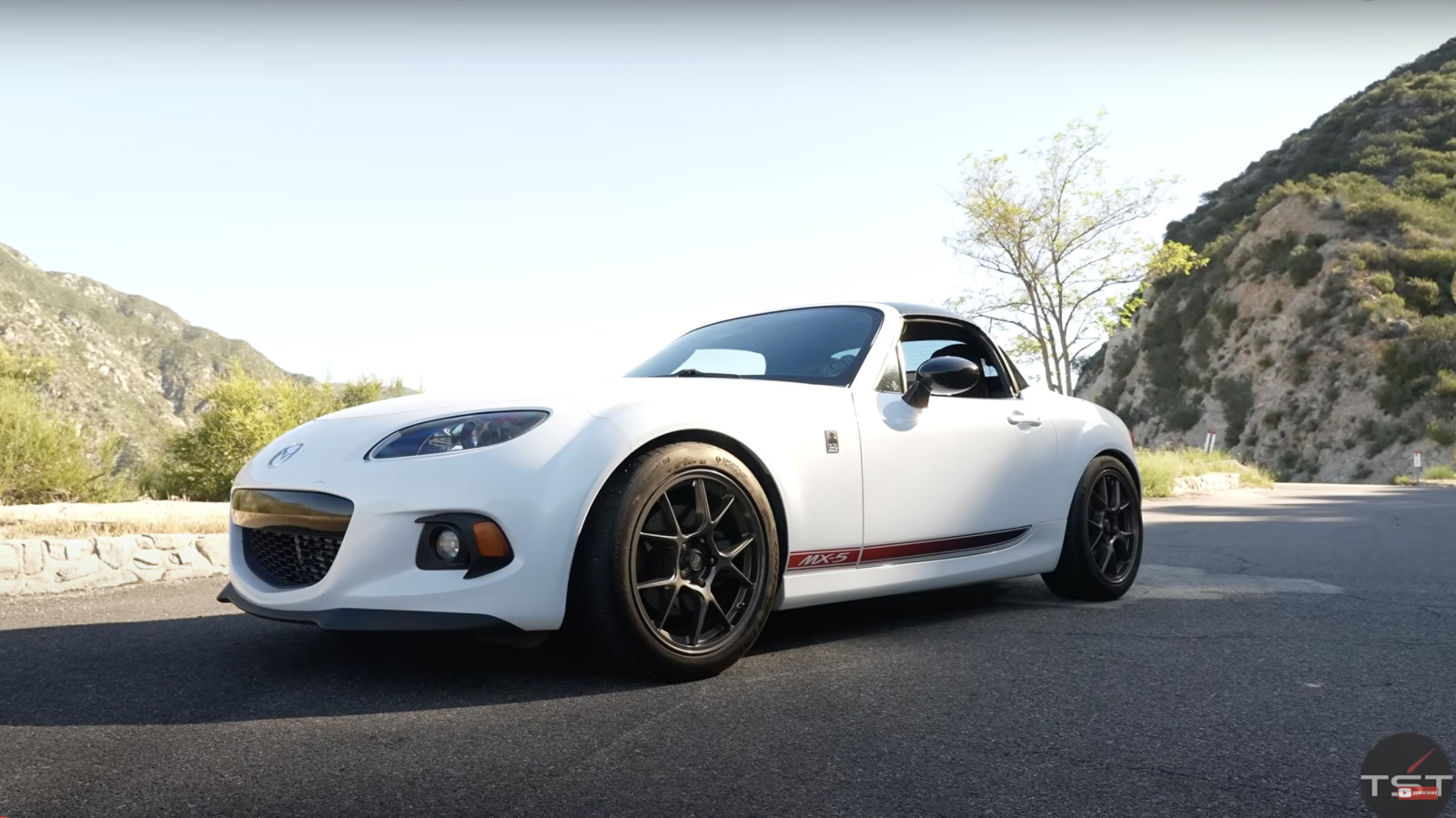Name a more iconic duo than the Mazda Miata and a V8 swap. You can’t, because those V8-swapped Miatas are basically perfect. Except, the number of people actually stepping up to trade their hard-earned cash for a V8 Miata was so small, when Flyin’ Miata stopped doing them, it took years for people to actually notice. But while it will never quite be the same, Flyin’ Miata will still happily sell you a turbo kit for your Miata that also keeps the (possibly soon-dead) California Air Resources Board happy. You get a quicker car, your kids still get to breathe and everyone comes out happy.
Of course, if the turbocharged car isn’t any fun, there’s no point in building one yourself. However, our friends at the Smoking Tire recently got a chance to drive Flyin’ Miata’s development car, and even if it’s still a little rough around the edges — and an NC — they sure looked like they had fun. The NC may be the least-loved Miata, but it’s still a Miata. Add in a turbo kit that boosts power from 130 at the wheels to almost 250, and you have a recipe for one heck of a good time. A good time that doesn’t also involve junking the catalytic converter in the process.
Turbo Miata
If you know much about Flyin’ Miata other than the fact that it used to offer V8 swaps for the Miata, you know it’s offered turbo kits for a while. The newer thing is that these are CARB-legal, allowing you to legally register these cars in states that don’t want their citizens to develop lung conditions. It’s about $5,000 to start, although if you need them to supply a catalytic converter, expect to spend closer to $6,000. Then, they estimate it’ll take about 20 hours of labor to put it all together, so you’ll either need to spend a couple weekends in your garage or pay someone to do it for you.
Of course, the development car isn’t just a stock Miata with a turbo. Flyin’ Miata also added an upgraded suspension, lighter wheels and high-performance street tires, and doing the same thing will drive up the cost of your turbo Miata even further. But from the sound of it, the end result will be a car that’s far quicker in the canyons than it has any right to be. Dropping the power-to-weight ratio from roughly 15 pounds per horsepower to about 9.5 pounds per horsepower tends to do that. And since people tend to prefer every other generation of Miata, you should be able to get a pretty good deal on an NC if you don’t already have one.
Will a turbo kit ever replace the burble of a V8? Not at all. Still, the idea that you could build a Miata with almost double the power, while also not turning you into a polluting POS? That’s a win for everyone involved. Including the kids who have to breathe whatever comes out of your exhaust.



